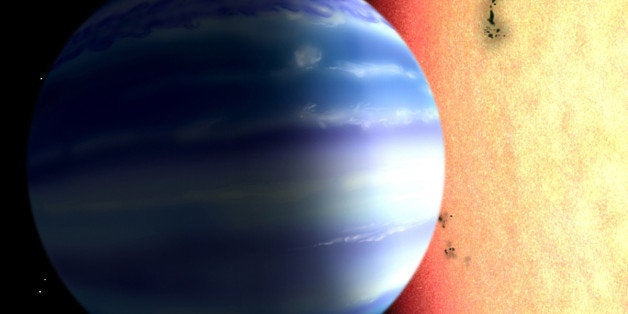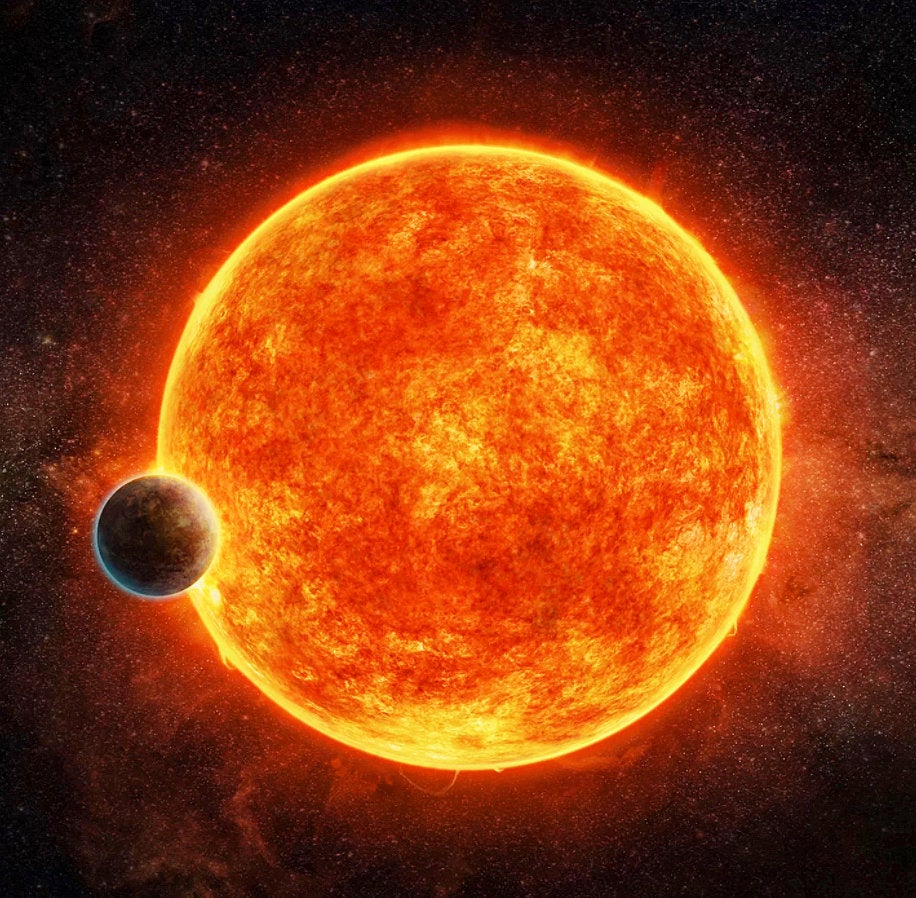
The Milky Way is teeming with billions of planets, including many that are similar to our own. But how many of these alien worlds have water, and do any host extraterrestrial life?
No answers to those questions just yet. But astronomers using a new infrared technique say they've discovered water vapor in the atmosphere of a nearby gas giant planet called "tau Boötis b."
The finding suggests that the technique may play an important role in identifying which exoplanets might be hospitable for life.
"By developing new techniques that examine the atmospheres of these planets in infrared light, it's becoming possible to examine many other worlds for water vapor in their atmospheres," Seth Shostak, a senior astronomer at the SETI Institute in Mountain View, Calif., told The Huffington Post in an email. "That would clue us in to how common it is for planets to have oceans, where chemicals can slosh around, meet up, and maybe--just maybe--produce some biology. Looking for water on exoplanets is the next step in learning whether life is unusual or as common as crabgrass."
Shostak was not involved in the new research.
Previously, scientists detected water in the atmospheres of exoplanets by examining specific wavelengths of light as the planets passed in front of, or transited, their host stars. Last December, for instance, NASA used observations from the Hubble Space Telescope to find water signatures in the atmospheres of five exoplanets. But according to the astronomers involved in the new research, this method only works for those rare planets spotted transiting their stars from Earth.
"We now are applying our effective new infrared technique to several other non-transiting planets orbiting stars near the Sun," Chad Bender, a research associate in the department of astronomy and astrophysics at Penn State University and a co-author of a paper describing the new finding, said in a written statement. "These planets are much closer to us than the nearest transiting planets, but largely have been ignored by astronomers because directly measuring their atmospheres with previously existing techniques was difficult or impossible."
Bender and his colleagues used the Near Infrared Echelle Spectrograph at the Keck Observatory in Hawaii to analyze infrared light emitted by tau Boötis b. By analyzing shifts in the light's wavelengths, the team determined the planet's "radial velocity" — which is its orbit around its host star — and found water's molecular signature in the planet's light spectrum.
“The information we get from the spectrograph is like listening to an orchestra performance; you hear all of the music together, but if you listen carefully, you can pick out a trumpet or a violin or a cello, and you know that those instruments are present,” Alexandra Lockwood, a graduate student at Caltech and first author of the study, said in a written statement. “With the telescope, you see all of the light together, but the spectrograph allows you to pick out different pieces; like this wavelength of light means that there is sodium, or this one means that there’s water.
The new technique is not without limitations. For now, it can be used only on hot gas planets that are large and orbit close to a bright host star, like tau Boötis b. But the researchers hope better instruments will allow scientists to use the method on planets that are more similar to Earth.
"Future telescopes such as the James Webb Space Telescope and the Thirty Meter Telescope will enable us to examine much cooler planets that are more distant from their host stars and where liquid water is more likely to exist," study co-author Geoffrey Blake, professor of cosmochemistry and planetary sciences and professor of chemistry at Caltech, said in a written statement.
The research was published online on Feb. 24 in The Astrophysical Journal Letters.
